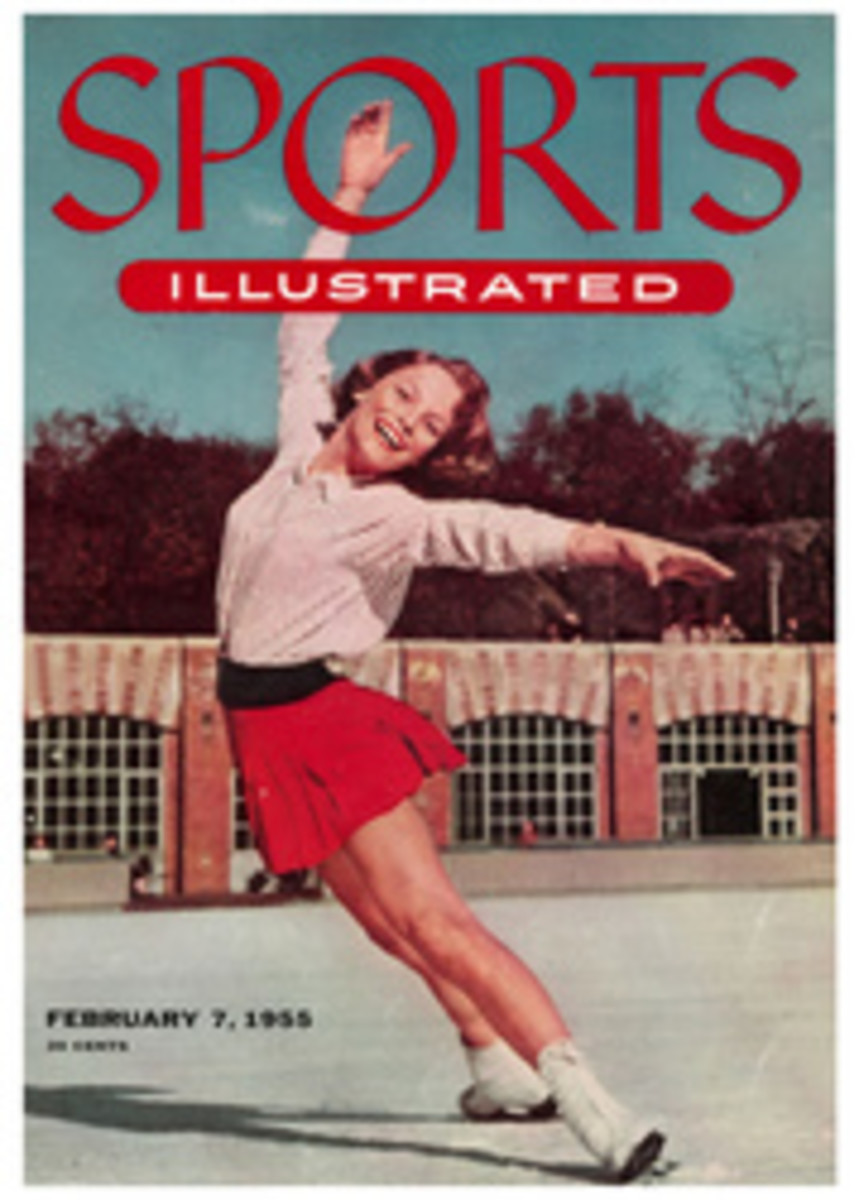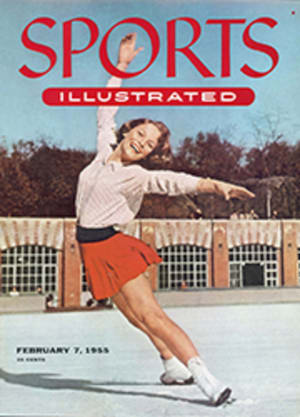
FIGHTS ON ICE
It may be that this will cause me to be held in contempt by the more pious critics of the National Hockey League, but I think that one of the funny things about any hockey season is the annual outcry against fighting during games. This one hasn't yet progressed to the point where a professor will get headlines by calling professional hockey a blood sport of about the same respectability as feeding Christians to lions, but that will come. It always does. So this is by way of being a rebuttal filed in advance.
Anyone who is surprised at fights breaking out in hockey should likewise be surprised each time the sun rises in the East. There is just something about being jammed into the sideboards at high speed, or catching a stick in the face or an elbow in the teeth, even if it's accidental (it sometimes is), which tends to rouse a man's fighting spirit. It is true that the rule book provides penalties for such eventualities. It is also true that because of the game's speed the referee can't see everything, and doesn't always call all he sees. Which brings us to a third truth—that quite often in hockey there seems no really acceptable alternative to giving a man a good punch on the nose.
One of the better examples of such a situation, among the fights I've seen recently, took place during a game between Montreal and Toronto. Early in this game Bert Olmstead of Montreal, a tall and rather righteous-looking young man, several times came within a whisker of chopping off someone's nose with the blade of his stick, which he often carries high. Indeed, in more than one case this would have happened, except that the nose in question previously had been bashed flat by one of Mr. Olmstead's elbows. The victims presumably hoped that if they kept their tempers the referee eventually would hear their bones crunching and would give Mr. Olmstead a penalty. This, however, did not come to pass, and any reasonably keen student of the game could have foretold what happened next.
All well-integrated hockey teams have in their line-ups players known unofficially as "policemen," part of whose duties, again unofficial, it is to step in when less robust players are being pushed around. One of the Toronto Maple Leafs' policemen is Tim Horton, one of the league's best rushing defense men, a youngster with a fierce jaw and a boyish crew-cut. Mr. Horton simply took the next opportunity to carry Mr. Olmstead into a corner, drop stick and gloves, and punch away with great authority. Both, of course, were sent to the penalty box for five minutes, but the punishment that the referee had failed to levy had been levied, nevertheless.
NATURE BOYS
That fight would have been good for all the talk on the subway going home if it hadn't been for another fight later in the game, which was an example of how an even more direct retaliation than Horton's can cause a fight. Bob Bailey, a courageous and headlong young center man up from Toronto's Pittsburgh farm for a second go at the big time, crashed the great Maurice Richard into the boards while both were chasing a loose puck. It was a borderline play which could have produced a penalty for Bailey, but the referee let it go and Bailey grabbed the puck and started on the attack. Richard, who would not be half the great player he is if he allowed himself to pushed around, got up and rushed to check him. In doing so, with his stick rather high, he broke two of Bailey's teeth. I just don't think it was unnatural that two young men of spirit should fight under such circumstances.
The ensuing hostilities lasted about 10 minutes and cost Richard $250 in fines, mainly because he was said to have slapped a linesman (who tried to restrain him) with his glove, although it appeared to me that Richard was only trying to retrieve his glove, which the linesman had grabbed.
Another type of hockey fight, as easily understood, is one which starts from plain loss of temper, due largely to the speed of the game and the necessarily comparable speed of the way a player reacts to any situation. A good example of this took place in a game between Detroit and Toronto. This one had a lot of tension because at the time the teams were fighting for second place. Tempers were short. When Marcel Pronovost's stick cracked the face of Jim Morrison, Toronto defense man, Harry Lumley, Toronto goalkeeper, apparently thought it had been done on purpose. He flung away stick and gloves and charged, his temper gone in an instant at the injury to his teammate. Dutch Reibel of Detroit, as loyal to Pronovost as Lumley was to Morrison, whaled away at Lumley from behind. Then Morrison, blood streaming from his forehead (six stitches were needed later), took over Pronovost himself, Lumley chased Reibel, and other players paired off. The fight lasted two or three minutes, caused six major penalties (Morrison had his stitches put in while serving his) and in my view was virtually un-preventable. Even if the referee had been going to give Pronovost a penalty for carving Morrison, he couldn't have done it fast enough to beat the reflex that sent Lumley into action.
HERE TO STAY
So I feel that fights in hockey are natural enough, the game being what it is. Some could be prevented by better refereeing, but not all. I've been watching the game since the middle '20s and there always have been fights, more than in any other sport (sometimes including boxing). If fighting had been going to kill the game, it would have died in infancy.
And often a game in which a fight occurs otherwise is pure hockey at its swiftest and most exciting, with the fights more or less natural by-products of the swiftness and excitement. Which may have prompted a remark by Conn Smythe, manager of the Toronto Maple Leafs, who haven't had an unsold seat for a home game since 1947. Smythe is no cynic who believes that the fights brought the customers, but he does realize that the fights are part of the game which, despite recent sagging fortunes in New York and Chicago due to weak teams, is still one of the most exciting of them all. Said he, after the Richard-Bailey and Olmstead-Horton fracases, products of one of the year's best games: "We've got to stamp out this sort of thing, or people are going to keep on buying tickets."
PHOTO
MAURICE RICHARD

